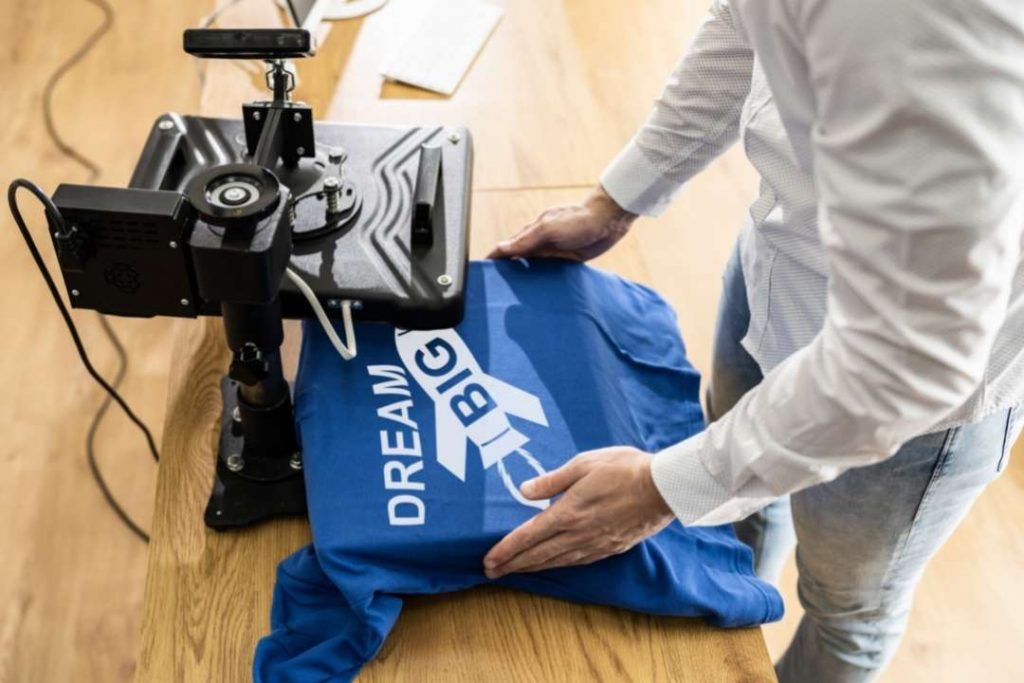
Why Clothing Brands Fail
Top Different Types of Shirts for Women and Men Top Different Types of Shirts for
Are you aware of the wonders of heat transfer printing? If not, then you are in for a treat! Heat transfer, also known as heat press printing, is a revolutionary technology that has transformed the apparel industry. With its ability to produce high-quality designs on a wide variety of fabrics, heat transfer has become a popular choice for many businesses and individuals a like.
In this post, we will explore some of the hidden benefits of heat transfer that you may not be aware of. From its ability to create intricate designs to its cost-effectiveness and versatility, we will dive into the various advantages of this game-changing technology. Whether you are a business owner looking to improve your product offerings or an individual looking to create customized apparel, this post will provide you with valuable insights into the endless possibilities of printing.
Heat transfer printing is a popular method of printing designs onto fabrics using heat and pressure. This process involves transferring a design from a carrier sheet to the fabric using a specialized printing machine, which can apply high levels of heat and pressure in order to create stunning designs that are durable and long-lasting.

There are several different types of heat transfer methods available, each with its own unique advantages and disadvantages. Some popular types of printing include digital transfer printing, screen printing, sublimation printing, and vinyl transfer printing. Each of these methods offers different benefits depending on the specific needs of the project.
Heat transfer printing can be done on a wide variety of materials, including cotton, polyester, nylon, and more. The type of material used will depend on the specific needs of the project, as well as the desired end result. For example, some materials may be better suited for certain types of designs or printing methods, while others may offer greater durability or a more vibrant finish. Overall, heat transfer offers endless possibilities when it comes to creating custom designs on various types of fabrics.
Heat transfer is a popular method of decorating fabrics and other materials with intricate designs, logos, and graphics. This process involves transferring an image or design onto the fabric using heat and pressure. Unlike other printing methods, heat transfer ensures that the design remains intact even after several washes. Here’s how the printing process works:
The first step in the printing process is to create your design. You can use graphic design software like Adobe Illustrator, CorelDRAW, or Canva to create your design. Once you have created your design, you need to reverse it horizontally, so that it will be printed correctly onto the fabric.
Next, you print the reversed design onto a special heat transfer paper using a digital printer. The heat transfer paper consists of a carrier sheet (usually made of silicon) and a printable surface coated with a special ink that reacts to heat.
After printing, you need to prepare the fabric for the transfer process. This involves preheating the fabric to eliminate any moisture that may interfere with the transfer process.
Once the fabric is prepared, you place the heat transfer paper face down onto the fabric and apply heat and pressure using a heat press machine. The heat causes the ink on the transfer paper to melt and bond with the fabric fibers, resulting in a permanent transfer of the design.
After the transfer process is complete, you remove the carrier sheet from the fabric, leaving the printed design behind. To ensure that the design lasts longer, you need to wait for at least 24 hours before washing the fabric.
Heat-transfer printing is a popular method of decorating fabrics and other materials with intricate designs, logos, and graphics. But just like any other printing method, it has its benefits and drawbacks. Here’s an overview of some of the pros and cons of heat transfer:

|
Pros
|
Cons
|
|---|---|
|
Versatility: Heat transfer can be used on a variety of fabric types, including cotton, polyester, and blends.
|
Limited color options: Heat transfer can only use a limited number of colors per design, which may limit the complexity of the design.
|
|
Customization: Heat transfer allows for customization of each print, making it suitable for small businesses and individuals.
|
Quality issues: If not done correctly, heat transfer can result in low-quality prints that may peel off or fade over time.
|
|
Durability: Heat transfer printed designs are more durable and long-lasting than other printing methods like screen printing.
|
Time-consuming: The process of heat transfer can be time-consuming, especially if you're producing large quantities of prints.
|
|
Cost-effectiveness: Heat transfer is relatively cheaper than other printing methods that require expensive equipment and specialized skills.
|
|
Compared to other printing methods like screen printing and direct-to-garment printing, heat transfer offers several advantages. For example, it’s more cost-effective and versatile. However, it also has some limitations, such as limited color options and potential quality issues.
Common issues with heat transfer include low-quality prints, peeling or cracking designs, and uneven transfers. These issues can be avoided by ensuring that you use high-quality materials, following the correct transfer process, and adjusting heat and pressure settings accordingly.
To ensure successful transfer printing, it’s essential to use high-quality materials, including heat transfer paper and vinyl. It’s also important to preheat the fabric and adjust heat and pressure settings according to the fabric type. Finally, it’s essential to work with a reputable printer who can provide high-quality prints.
Transfer printing is a cost-effective and efficient way of producing high-quality designs on fabrics. However, the cost of heat transfer can vary depending on several factors. Here’s an overview of the factors affecting the cost of heat transfer: If you want to learn more about heat transfer printing click here.

Fabric type: The cost of heat transfer may vary depending on the fabric type. Some fabrics may require more preparation or special treatments before printing, which can increase the overall cost.
Design complexity: Designs that are more complex may require more color layers, which can increase the cost of printing.
Quantity of prints: The more prints you need, the lower the cost per print. However, printing in bulk may require additional machinery or labor costs, which can affect the overall cost.
Quality of materials: Using high-quality heat transfer paper and vinyl can increase the cost of printing but can also result in higher quality prints.
Compared to other printing methods like screen printing and direct-to-garment printing, heat transfer is generally more cost-effective. This is because it requires less expensive equipment and specialized skills. However, it’s important to note that heat transfer may have some limitations, such as limited color options and potential quality issues.
Here are some tips for minimizing the cost of printing:
Choose a simple design: Designs with fewer colors and simpler shapes will be less expensive to print.
Use standard fabric types: Standard fabric types, such as cotton and polyester blends, are typically less expensive to print on than specialty fabrics.
Print in bulk: When possible, print in bulk to reduce the cost per print.
Work with a reputable printer: Working with a printer who uses high-quality materials and has experience with heat transfer printing can help ensure that you get the best value for your money.
In conclusion, heat transfer printing is a versatile and cost-effective method of producing high-quality designs on fabrics. It allows for customization, durability, and versatility, making it an essential part of the apparel industry. While it has its benefits and drawbacks, following the correct process, using high-quality materials, and working with reputable printers can help overcome any potential issues. By considering the factors that affect the cost of heat transfer, you can minimize costs while still receiving quality prints. Overall, heat transfer offers a fantastic solution for individuals and businesses looking to create unique and durable designs on fabric-based products.
Heat transfers printing can be used on a variety of fabrics, including cotton, polyester, and blends.
Heat transfer printed designs are more durable and long-lasting than other printing methods like screen printing.
Yes, heat transfer allows for customization of each print, making it suitable for small businesses and individuals.
Heat transfer has some limitations, such as limited color options and potential quality issues if not done correctly.
The cost of heat transfer can vary depending on several factors, including fabric type, design complexity, quantity of prints, and quality of materials.
Heat transfer offers several advantages over other printing methods like screen printing, including versatility, durability, and cost-effectiveness.
To ensure that the design lasts longer, you need to wait for at least 24 hours before washing the fabric.
Printing in bulk with heat transfer is possible, but may require additional machinery or labor costs.
Materials required for heat transfer include a digital printer, heat transfer paper, heat press machine, fabric, and transfer tape.
Expert Custom Clothing Manufcaturer

Top Different Types of Shirts for Women and Men Top Different Types of Shirts for

What You Must Know About Clothing Samples? Before You Produce a Single Garment: What You

How Much Does It Cost To Make a Hoodie A Complete Cost Breakdown for Custom

Discover the Types of Buttons Discover the Types of Buttons That Transform Style and Functionality
Most Recent Posts
Expert Custom Clothing Manufcaturer
Join our Mailing list!
Get all latest news, exclusive deals and updates.